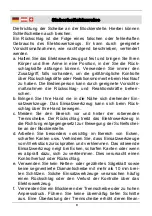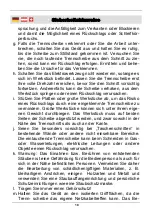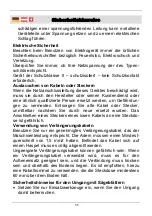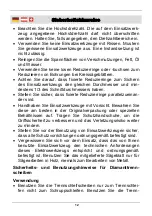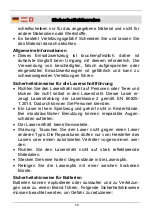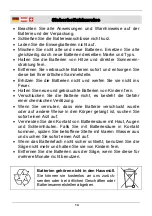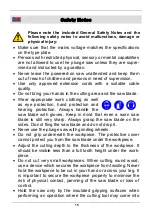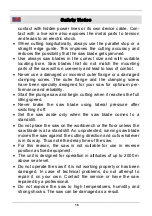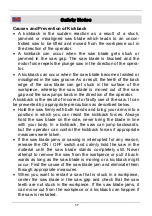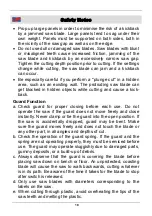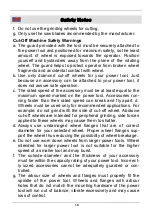
16
Safety Notes
contact with hidden power lines or its own device cable. Con-
tact with a live wire also exposes the metal parts to tension
and leads to an electric shock.
When cutting longitudinally, always use the parallel stop or a
straight edge guide. This improves the cutting accuracy and
reduces the possibility that the saw blade gets jammed.
Use always saw blades in the correct size and with suitable
locating bore. Saw blades that do not match the mounting
parts of the saw will run unevenly and lead to loss of control.
Never use a damaged or incorrect outer flange or a damaged
clamping screw. The outer flange and the clamping screw
have been specially designed for your saw for optimum per-
formance and reliability.
Start the plunge saw and begin cutting when it reaches the full
idling speed.
Never brake the saw blade using lateral pressure after
switching it off.
Set the saw aside only when the saw blade comes to a
standstill.
Do not place the saw on the workbench or the floor unless the
saw blade is at a standstill. An unprotected, running saw blade
moves the saw against the cutting direction and cuts whatever
is in its way. Thus note the delay time of the saw.
For this reason, the saw is not suitable for use in reverse
position as fixed equipment.
The unit is designed for operation in altitudes of up to 2000 m
above sea level.
Do not operate the saw if it is not working properly or has been
damaged. In case of technical problems, do not attempt to
repair it on your own. Contact the service or have the saw
repaired by a professional.
Do not expose the saw to high temperatures, humidity and
strong shocks. The saw can be damaged as a result.








